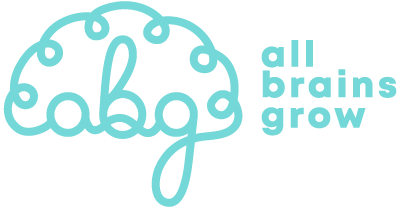Meltdowns, characterized by a heightened emotional response and loss of control, can be triggered by various factors, ranging from sensory overload to stress and anxiety.
While we can’t always control our child’s environment, we can learn to recognize patterns, control our reactions, and support our child during this horrible event. The hardest thing to accept as parents is that sometimes meltdowns build up because of us. Not only because of our child’s special needs, but because we aren’t noticing the patterns.
Whether your child is autistic, has ADHD, cerebral palsy, epilepsy, down syndrome or any brain challenge, it is is particularly important to figure out the dos and don’ts of a meltdown. This way we are able to help our children help themselves.
Here are the dos and don’ts during your child’s meltdown.
What NOT To Do During Your Child’s Meltdown
It’s hard to know what to do when your child has a meltdown. No child or meltdown is the same – what worked last time might not work this time. So, let’s start with what not to do.
Don’t punish or yell at your child. Don’t force them to stop.
Parts of your child’s brain have completely shut down during a meltdown. Your child isn’t not going to be able to turn on the listening and calm part of their brain immediately. Besides, punishing a child for something they can’t control will only make the situation worse. Instead, focus on compassion — your child isn’t enjoying this experience either.
Don’t make the meltdown about you.
Meltdowns are exhausting for you, the parent. You’re likely feeling all sorts of emotions from embarrassment to anger to fear. While your feelings are valid, expressing them to your child will only make the situation worse. The meltdown isn’t about you. They’re not purposefully embarrassing you or causing you pain. After your child has calmed down, you can take time to yourself to recuperate.
Don’t expect a conversation.
Once a meltdown starts, it needs to run its course before you can help your child. Things like asking questions can overwhelm your child more. It’s not the time for any sort of conversation. Don’t make this meltdown moment about teaching. This can feel counterintuitive. You want to ask, “What’s wrong?” However, it’s better to wait and calmly let them know you’re here if they need you. You’ll get to teach them, but later.
Don’t ignore them and don’t make eye contact.
While your child doesn’t want to be prodded, make sure they know you are available to them. But at the same time, don’t be in their face and take from their energy. Just don’t make eye contact but be a peaceful presence to your child. Meltdowns can be dangerous, and you want to assure your child that you’re there for whatever they need. You also don’t want them to feel abandoned when they start calming down.
Don’t take away their favorite comforting items.
Even if you’ve created a meltdown plan before, don’t take away what your child uses to self-regulate. These sensory items can help your child calm down. If you’re going to do anything, offer more comfort items for your child to use, like blankets or toys. You want your child to help themselves. But be careful, sometimes it can be that same item that can cause their sensory overload and excitement. If you feel the need to take something away, make sure you replace it with something or offer similar physical sensation.
What You Should Do During Your Child’s Meltdown
Now that you know what you shouldn’t be doing, here are some tips for what you should do. Remember, your focus should be on helping your child feel better — nothing else.
Show empathy and understanding.
Your child isn’t meaning to misbehave, even if it looks like it. Put yourself in your child’s shoes and let go of the judgment of onlookers. Your child is doing what they need to do to feel safe again. If your child is in public, your example can affect how others view the situation as well.
Drop your energy.
Although meltdowns can be dysregulating for you, it’s important not to show your child how uncomfortable you are. You need to be steady, calm, and emotionless in this moment. Your drop in energy is what will help them drop their energy eventually. You’re the rock they can turn to when they’re ready — not something stimulating. Take time for yourself afterward because continuous meltdowns can lead to burnout.
Find a quiet and safe place for them.
Typically meltdowns are triggered by something in the environment. Until the trigger is taken away, your child will struggle. If you’re able, take your child to a quiet place, dim the lights, turn down the music, and/or bring them to a place they know can help them feel regulated again.
Leave them alone to calm down.
Unlike a tantrum, a meltdown has to run its course. Typically, your child won’t want to be touched or spoken to very much. Just be present with your lowered energy. If you do talk, make sure you’re the only one doing so.
Help them help themselves.
Offer — but don’t force — their favorite toy, noise-canceling headphones, blanket, squeezing hands, etc. These distractions are useful before the meltdown begins, and they can help your child self-regulate during the meltdown.
5 Ways To Deal With Meltdowns Without Feeling Helpless
Meltdowns aren’t just disruptions, they’re brain-based reactions. All Brains Grow helps families feel confident and at peace with their child’s meltdowns because you, as the parent, should feel empowered to do what’s best for your neurodivergent child.
While we’ve gone over what not to do during a meltdown and a bit on what to do, we have more brain-based strategies available for FREE in our guide:
5 Ways To Deal With Meltdowns Without Feeling Helpless.
Ready to no longer dread meltdowns? CLICK HERE to download the guide.


